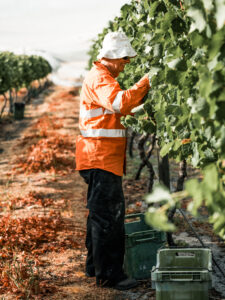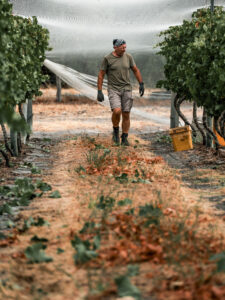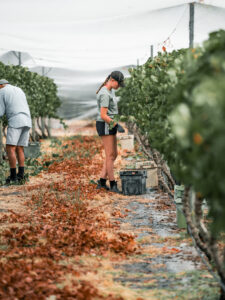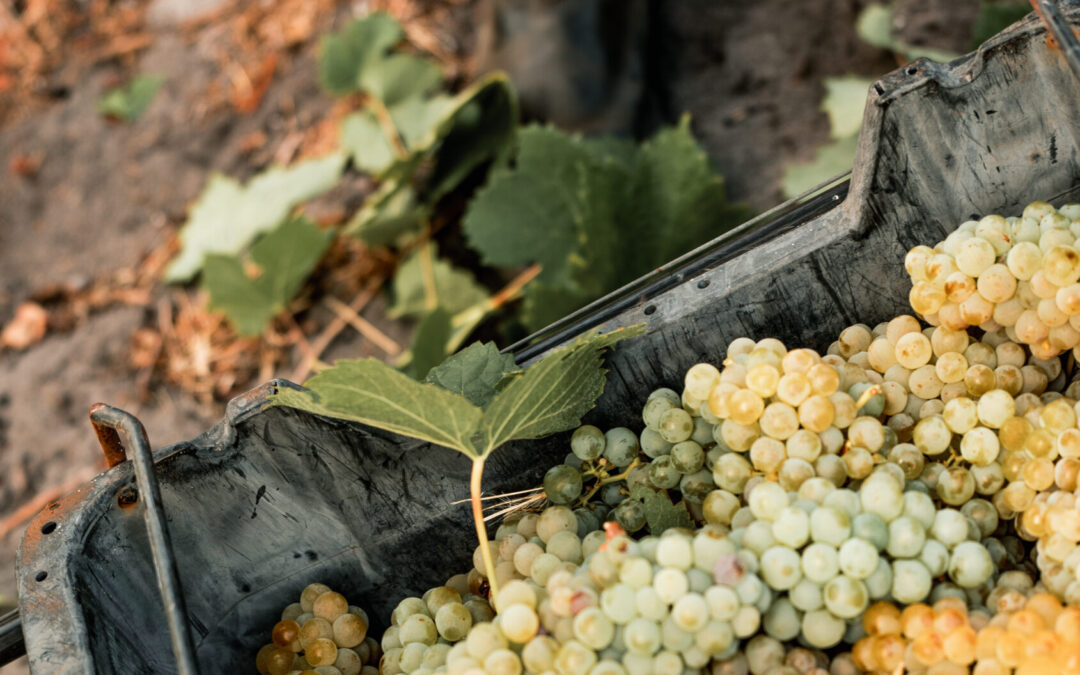“Whites are round and rich, less acidity, but flavoursome. Chardonnay looks really interesting in the barrel, full of character, Sauvignon Blanc showing more tropical notes and Semillon probably most affected by yield losses in the whites.
Red varieties generally were able to bounce back from the heatwaves, particularly the Bordeaux varieties Cabernet Sauvignon and Malbec, which retained colour and varietal expression.” Kim Horton, Willow Bridge Estate.
The 2023/2024 growing season in the Geographe Wine region was hotter and drier than normal.
Winter rainfall in June and July was average, however the second half of August started drying up. The rain was adequate to fill dams and the soil profile.
September was warmer than usual and heralded things to come, and the rainfall was about 50% of average. October was warm, and the heat waves started in November, during this time, the rainfall was very low.
Summer months of December through to February had no useful rain, and the wind was high and persistent, with the temperatures well above average.
In preparation for the season, the GWIA held an information meeting to discuss mitigation strategies. Optimising water delivery systems, pre-emptive watering prior to hot spells, minimal leaf plucking or vine trimming particularly on the hot Western sides, were all used effectively to minimise the damage; however, some, (mainly) red varieties still saw sunburn and shrivelling.
The season started in record early time and was considerably compressed. Most of the fruit was off by the end of February (usually the end of March), and most wineries finished in 4 weeks (Usually 8-10). This fast and furious vintage caused some headaches in the wineries, with machinery being used at a record rate and vessels for fermenting and storing being in high demand. One of the blessings of the season was the early and plentiful Marri blossom, which helped keep the birds away from the fruit.
The fruit, despite the challenges is looking very promising. The whites mostly came off before the hot weather looks to be very good quality. The phenolics will be slightly more developed, and acids are variable. The reds, picked in the middle of the heatwave, were challenging in terms of best picking times, but the reports are cautiously optimistic regarding quality. Of note, the yields of juice per tonne were about 10% down, resulting in a higher than usual skin to juice ratio.
All in all the vignerons and wine-makers in the Geographe wine region are breathing a sigh of relief that we made it through such a challenging year, and are excited to see how the wines look when they finally get to the table.
“Despite it being the driest summer that we have experienced here in 20 years, it was bizarrely a positive in that we didn’t have any rain events which would have caused berry splitting/disease. This in many ways is harder to deal with as a winemaker than controlling and managing a mildew/botrytis outbreak.” Cathy Howard Whicher Ridge
“Flavour development well exceeded expectations from such a hot & fast vintage.” Mark Cumbers Vineyard 28
Photo credits to Uncommon Creative
I would like to acknowledge input from the following:
Cathy Howard from Whicher Ridge: 0418 833 402
Kim Horten from Willow Bridge Estate: 0422 128 362
Jim Campbell-Clause from AHA viticulture: 0418 479 476
Mark Cumbers Vineyard 28: 0408 931 892
Who contributed to writing this report, and who are happy to field questions if requested.
Philip Smith
President Geographe Wine Industry Association
PO Box 6026, Bunbury, WA 6231
0417961741





Recent Comments